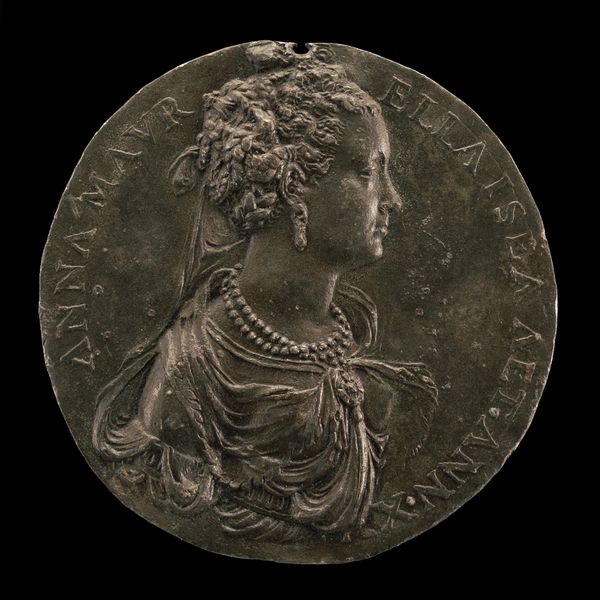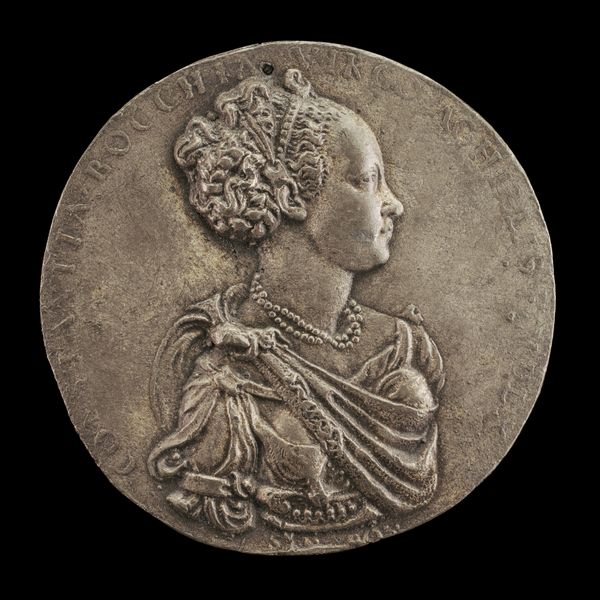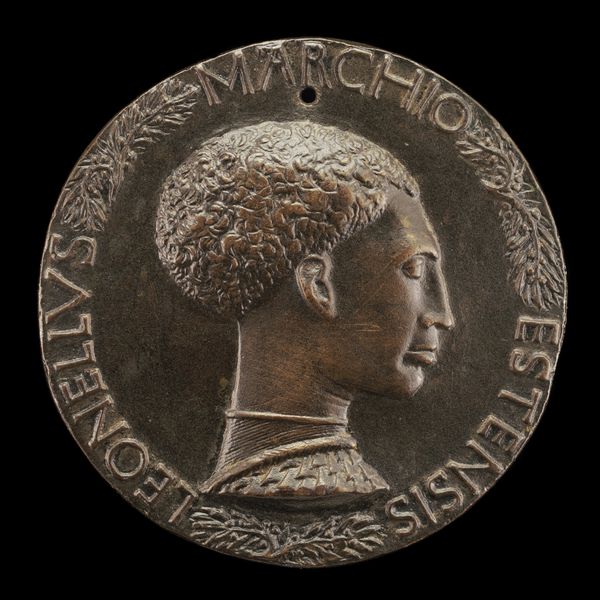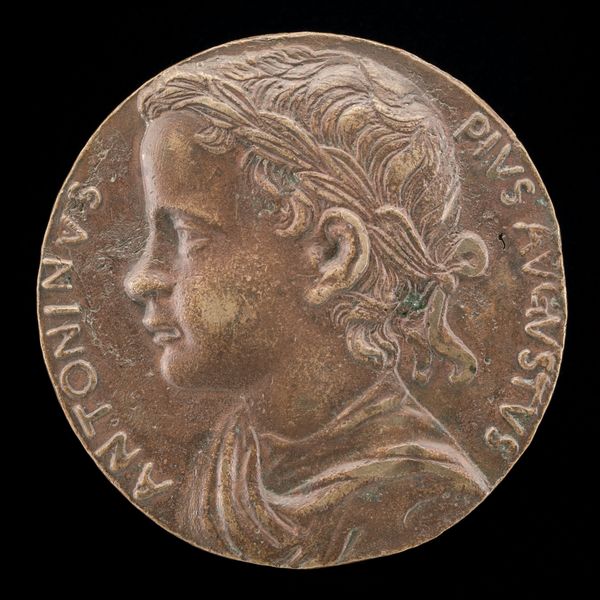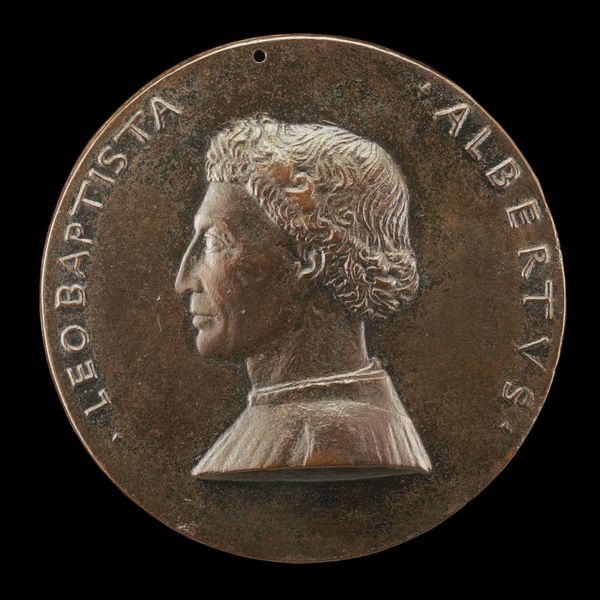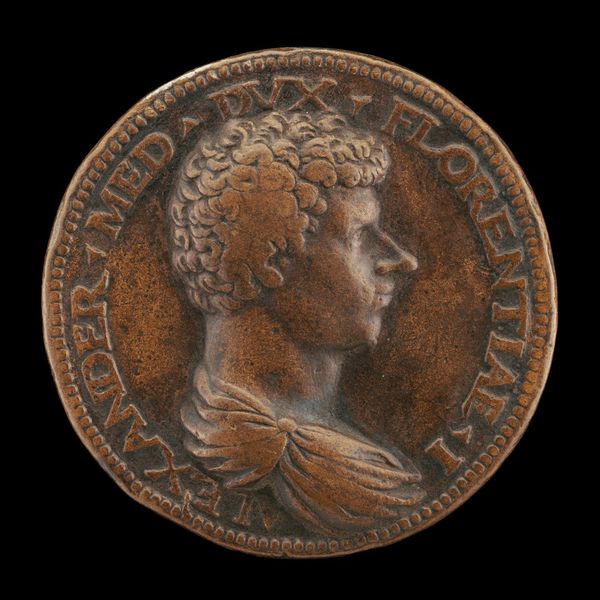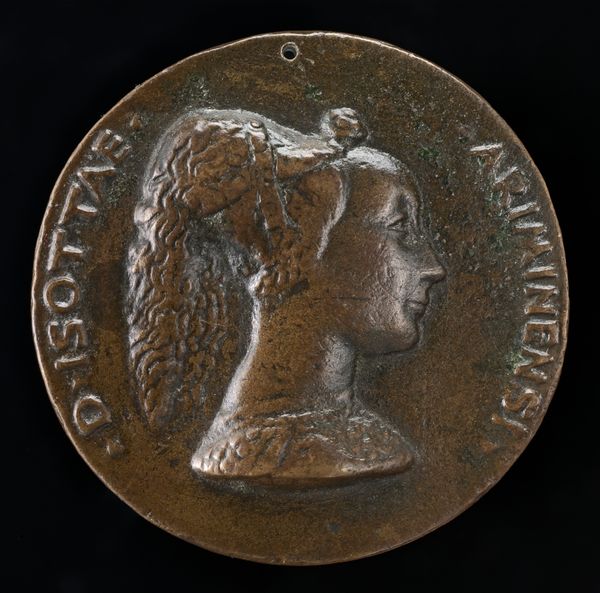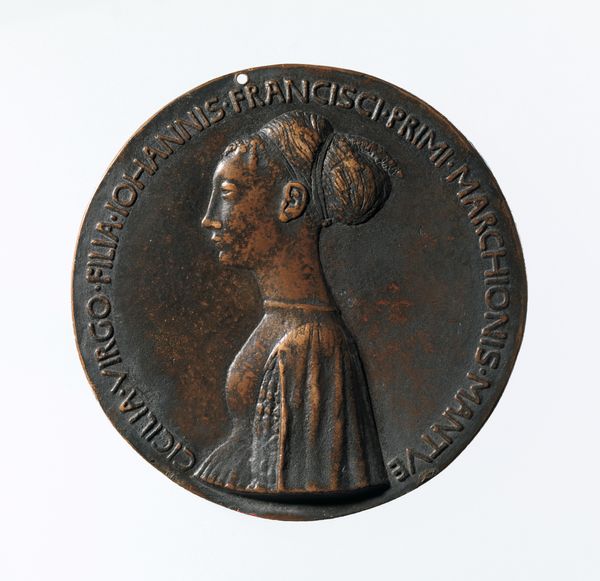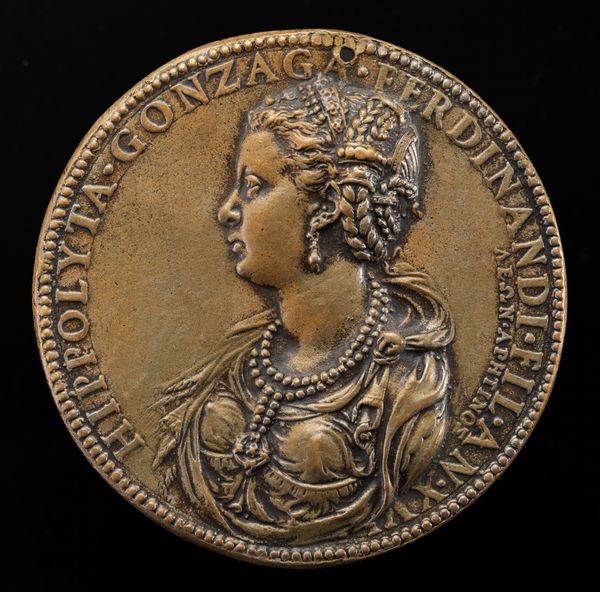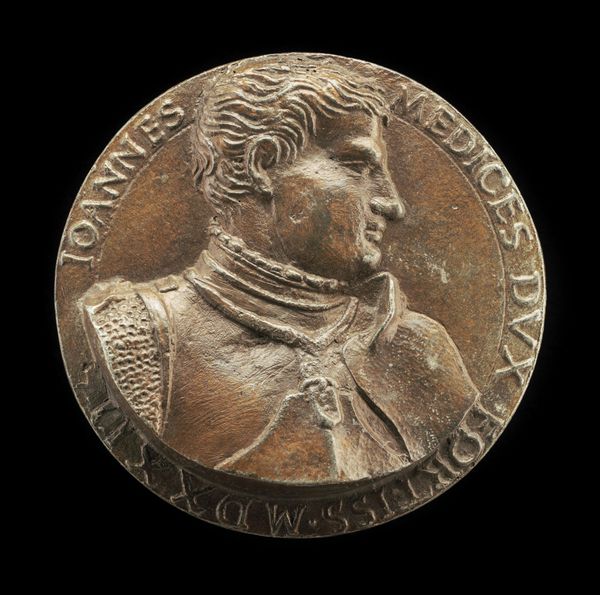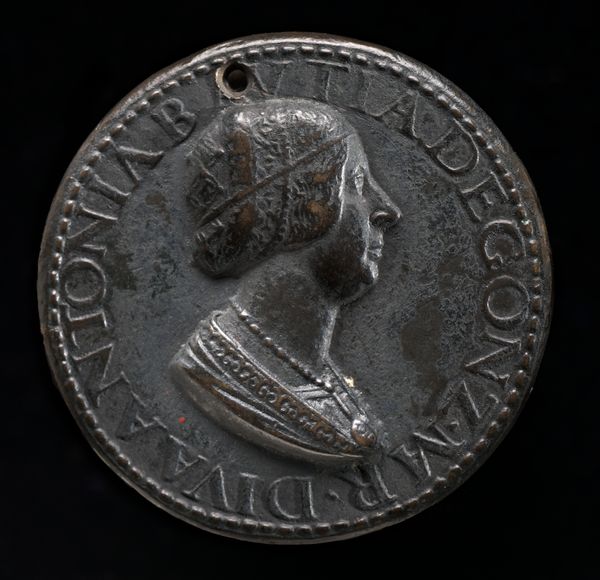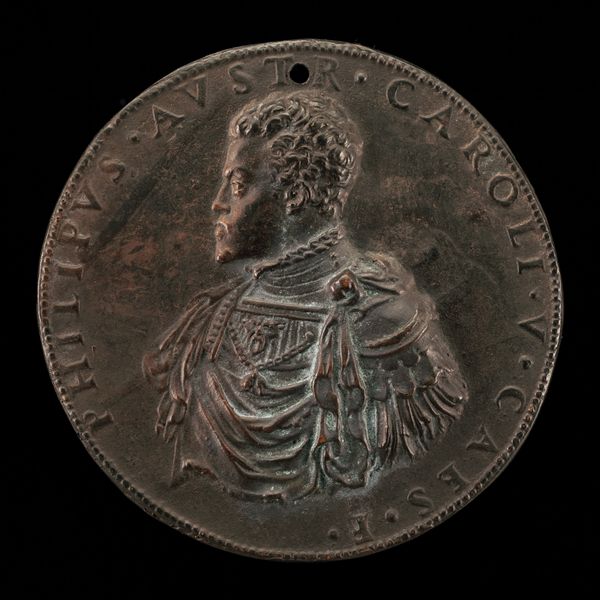
Elena Marsuppini, d. 1575, Wife of Francesco da Sangallo 1551
0:00
0:00
metal, bronze, sculpture
#
portrait
#
metal
#
sculpture
#
bronze
#
sculpture
#
italian-renaissance
Dimensions: overall (diameter): 9.75 cm (3 13/16 in.) gross weight: 246.9 gr (0.544 lb.)
Copyright: National Gallery of Art: CC0 1.0
Curator: Isn't she striking? A woman rendered in such detail, caught in bronze for eternity...or at least until the next big foundry fire. Editor: A bit austere, wouldn't you say? So classical in its form and profile, yet almost unsettlingly present. Like a Roman coin unearthed, but with a real person staring back. Curator: Precisely. What we’re looking at is a bronze portrait medal of Elena Marsuppini, the wife of the sculptor Francesco da Sangallo. The piece was created in 1551, a fascinating moment in the Italian Renaissance where the public role of women in the arts was just beginning to shift. The work attempts to ennoble its subject, elevating her. Editor: Ennobling... or embalming, artistically speaking. There's something very formal, very official about the gaze and rigid line. Was this really about Elena, the person, or Elena, the symbol, the wife of Francesco? The latter's professional ascendancy hinged, quite literally here, on how Elena was presented. Curator: It’s hard to separate those things. Surely love played a part, or a feeling close to it, and he certainly wished to project wealth, family, nobility – a total package. Think about the material—bronze. A costly choice intended for durability and status. Bronze for eternity or to impress contemporaries... tomato, tomahto. Editor: But think of the restrictions, the visual vocabulary so strongly dictated by humanist values! The power structures inherent in portraiture that framed how Renaissance women were depicted… I feel sympathy for Elena! Trapped in the round! Curator: Ah, trapped maybe, but immortalized too. What sculptor wouldn't want to capture the likeness of his beloved? Though there are also other examples of similar medals so who is to know? We project meaning all the time, especially now, with all these museums shaping narratives. And really it's all just storytelling. We still can't know what their life was truly like... and probably shouldn't either. Editor: Still, a face to contemplate, to consider, even centuries later. She serves as a sort of "everywoman", representative of a class and an era—and you're right—perhaps it is better to enjoy these moments of ambiguity without always having all the answers.
Comments
No comments
Be the first to comment and join the conversation on the ultimate creative platform.
